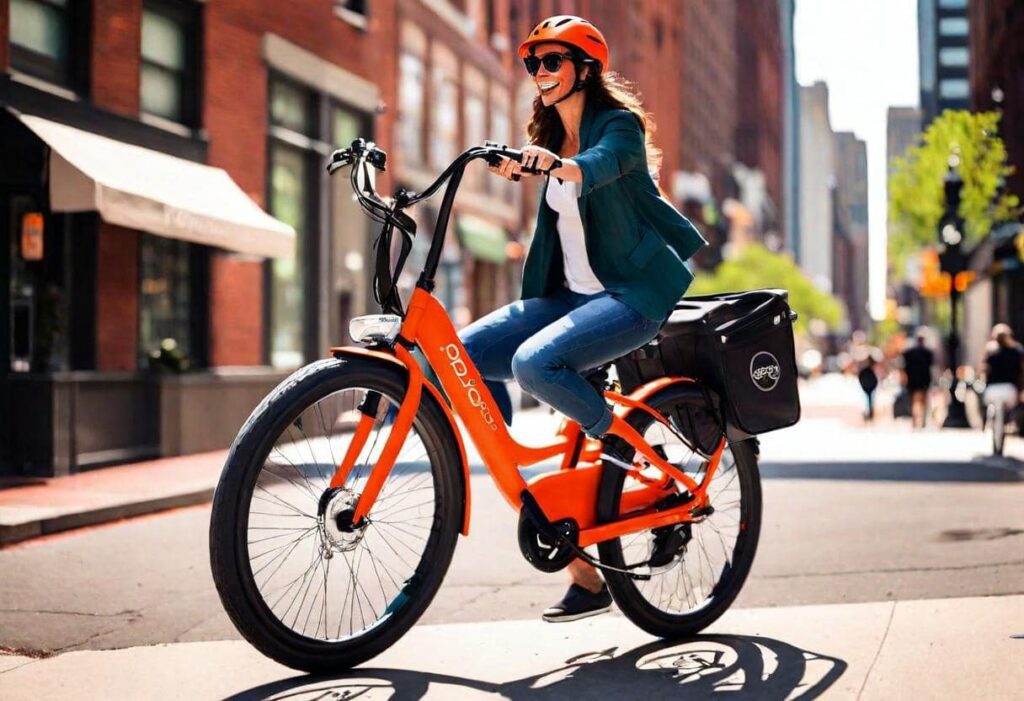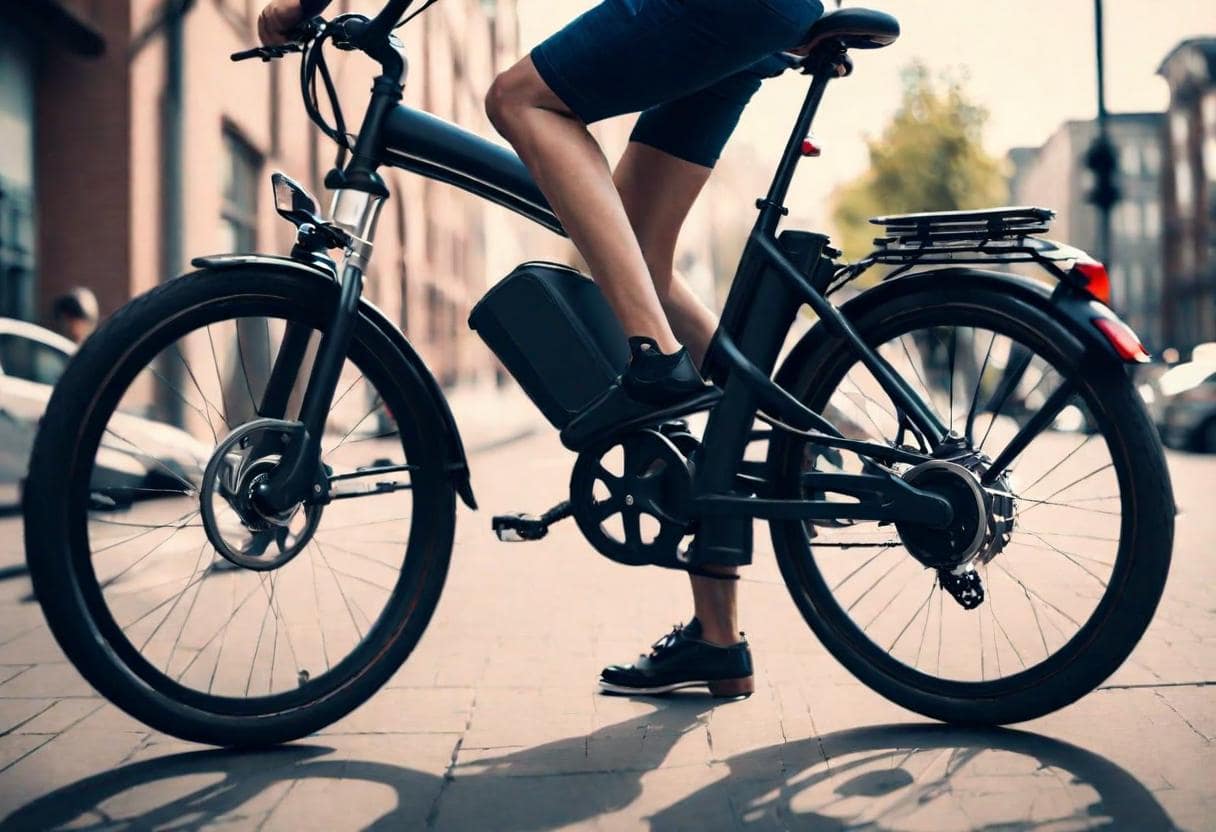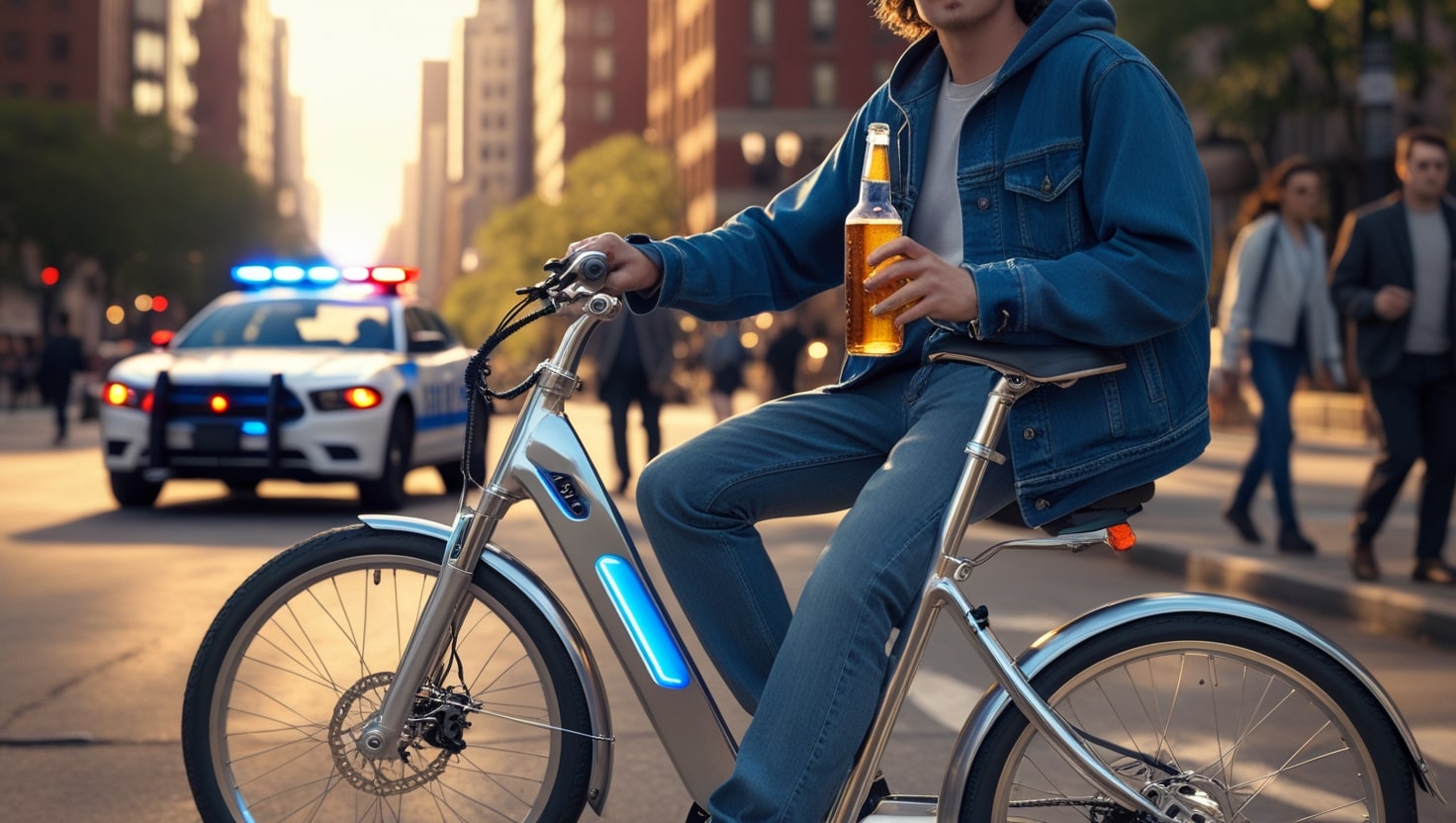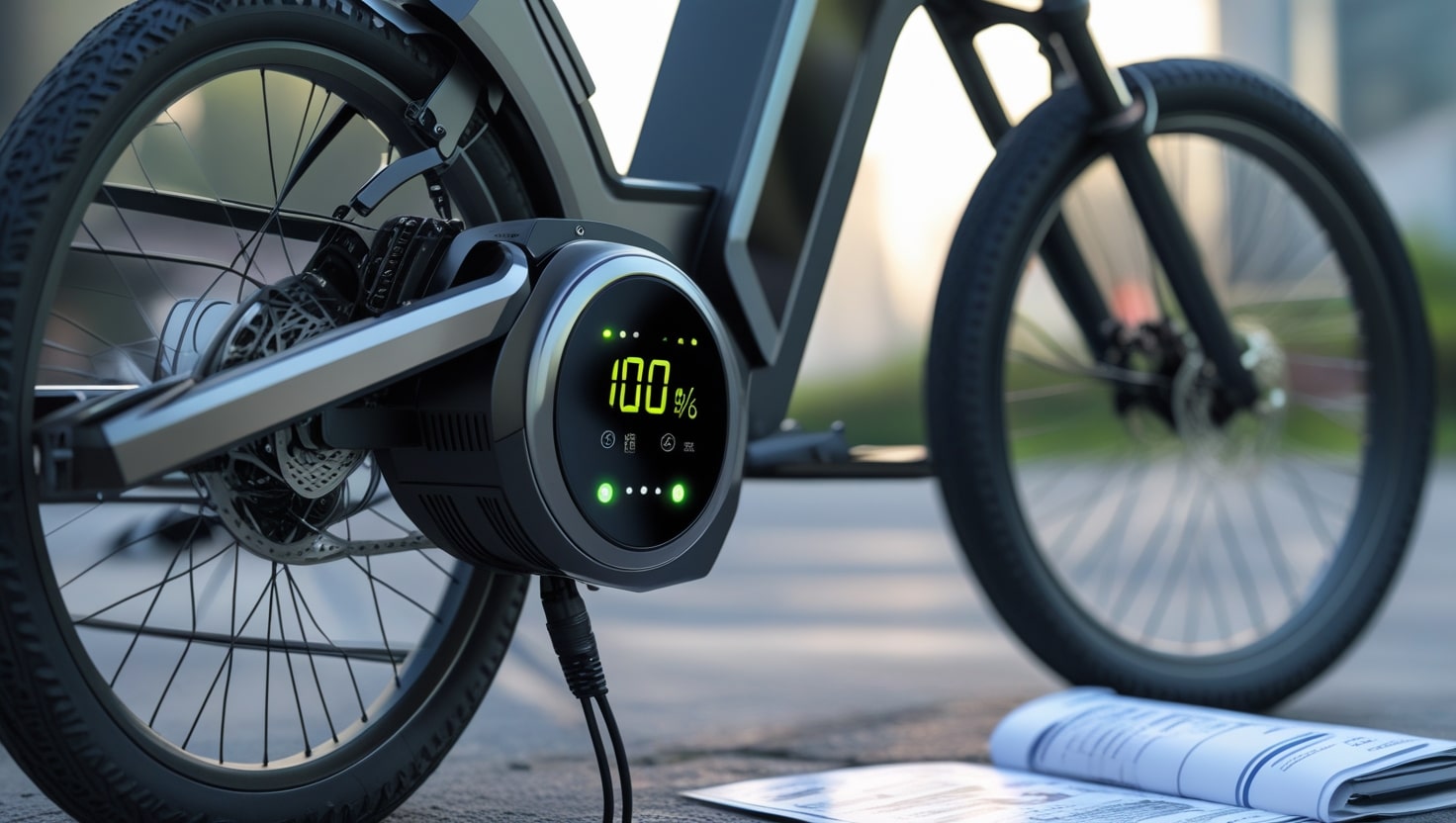Electric bikes, also known as e-bikes, have truly revolutionized the cycling world. By offering an assisted mode of transportation, they combine the benefits of traditional bicycling with the convenience of motor assistance. This common question often arises among potential e-bike owners and enthusiasts alike: can you pedal an electric bike like a regular one? The straightforward answer is yes. E-bikes are designed to allow you to pedal just like you would on a conventional bicycle, providing the same bicycling experience but with added assistance when needed.
From my own experience, the transition to an electric bike was seamless. I found that e-bikes maintain the essence of traditional bicycling, offering the benefits of exercise and exploration, while motor assistance adds a layer of convenience that’s hard to beat. This assisted mode makes tackling hills and longer distances much easier, which is a significant benefit for many riders. For potential e-bike owners, the ability to pedal an electric bike without relying solely on the motor is a key feature that enhances the riding experience, making it suitable for a wide range of enthusiasts.
Pedal-Assist vs. Throttle Control
The essence of an e-bike lies in its advanced technology featuring dual-operation systems: pedal-assist and throttle control. These systems provide a unique riding experience, catering to different rider preferences and needs. As someone who enjoys cycling, I find that understanding these options is crucial for making the most out of an e-bike.
The Pedal-Assist System is at the heart of many e-bikes. It uses a sensor that detects pedaling motion and force, then triggers the motor to provide a proportional boost. The combination of human effort and electric power creates a smooth, natural ride feel. It’s almost like mimicking the experience of riding a traditional bicycle, but with much less exertion.
Typically, this system features multiple levels of assistance, allowing riders to tailor the motor’s output to their desired level of physical engagement and the riding conditions they face.
On the other hand, Throttle Control offers a different kind of flexibility. When riders want a break from pedaling or need to accelerate, they can use the throttle. By engaging the throttle, usually located on the handlebar, the rider can propel the bike forward with electric power alone.
This feature is particularly convenient for starting from a stop or cruising without any physical exertion. While not all e-bikes come equipped with throttle control, its presence highlights the e-bike’s adaptability to varying rider preferences and needs.
From my experience, having both pedal assist and throttle control on an e-bike provides the best of both worlds. The dual-operation systems make it easy to switch between a more traditional riding experience and the convenience of a motorized boost, depending on what the situation calls for. This flexibility is why e-bikes have gained so much popularity among cyclists looking for an enhanced riding experience.

How Do Electric Bikes Work?
At the heart of every electric bike are three key components: the motor, battery, and controller. These parts work in harmony to provide electric assistance as you pedal. When you begin to pedal, the bike’s sensors activate the motor, which then delivers a smooth boost of power to your efforts. This process is seamless, and designed to enhance your riding experience without overshadowing the joy of cycling.
An e-bike typically offers three different modes of operation. The first is pedal-only, where the bike operates like a traditional bicycle. The second is pedal-assist, where the motor provides a gentle boost to your pedaling efforts, making it ideal for tackling steep inclines or long distances with ease. The third mode is fully electric, where the motor takes over completely, requiring no pedaling at all. This versatility allows riders to customize their e-bike experience according to their physical abilities and travel requirements.
The battery‘s capacity is another crucial aspect, as it determines how far you can go on a single charge. Modern e-bikes offer ranges that can comfortably cover daily commutes and leisurely explorations alike. This means you can rely on your e-bike for various activities without worrying about running out of power.
In my experience, riding an electric bike has been incredibly rewarding. The smooth boost provided by the motor makes it easier to conquer hills and travel longer distances. The ability to switch between modes ensures that I can always find the right balance between physical effort and electric assistance, making every ride enjoyable and efficient.
Related: How Much Do Electric Bikes Weigh?

Different Types Of Ebike Pedals
When considering different types of e-bike pedals, it’s essential to recognize how various options on the market can significantly enhance your riding experience. Each type of pedal offers distinct advantages for different riding styles and rider preferences. As an avid cyclist myself, I’ve tried many kinds of pedals to find what works best for me.
Many people, especially casual riders and beginners, prefer platform bike pedals for their simplicity and comfort. These pedals provide a broad, flat surface for your foot, delivering solid support and comfort for short trips or leisurely rides. Their straightforward design and ease of use make them an excellent choice for daily commuting or running errands, allowing riders to hop on and off their bike effortlessly and wear any type of shoe.
For those seeking more security and efficiency, Pedal Toe Clips and Straps offer a step up. By enclosing the toes or securing the foot with straps, these pedals enable riders to apply force on both the downstroke and upstroke, improving the overall pedaling effectiveness. This feature is particularly advantageous on e-bikes, helping to maintain a consistent cadence and ensuring more efficient use of electric assistance. Toe clips and straps are ideal for riders who want more control and performance but aren’t ready for a completely clipless system.
The ultimate in pedaling efficiency and performance comes with Clipless Bike Pedals. This system ‘clips’ a cleat on the bottom of specialized cycling shoes directly to the pedal, creating a secure foot-to-pedal connection. This arrangement increases power transfer from rider to bike, making it easier to travel long distances or tackle steep hills. Clipless pedals are favored by seasoned cyclists and those aiming to optimize their e-bike performance, whether it’s for fitness, touring, or off-road exploration.
Choosing the right pedals for your e-bike depends on your riding style, comfort preferences, and what you want to get out of your cycling experience. Each type provides distinct benefits, from the simplicity and comfort of platform pedals to the enhanced control of toes.
Related: How to Get a Free Electric Bike

Should I Choose A Suitable Pair Of Electric Bicycle Shoes
When choosing shoes for your electric bike, it’s important to make sure they are compatible with your pedal system and suitable for the type of riding you plan to do.
2-Hole Design Pedals (SPD System)
- Add two recessed slots on the sole of the shoe, making walking easier.
- Cleats are recessed into the sole, making them less obtrusive and more comfortable for walking.
- A favorite of mountain bikers, commuters, and touring cyclists, these pedals are prized for their versatility and ability to comfortably ride the bike.
- Offers a secure connection while still providing enough flexibility for a range of activities.
3-Hole Design Pedals (Look/SPD-SL System)
- Includes a broader platform for the cleat, ensuring a firmer connection and more direct energy transfer.
- Typically preferred by road cyclists focused on maximizing performance and efficiency.
- The cleats extend from the sole, which can make walking more difficult but provides excellent stability and power transfer while riding. They are perfect for long rides and speed-focused cyclists who need maximum pedaling efficiency.
- Ideal for riders prioritizing long rides and speed who require optimal pedaling efficiency.
When choosing shoes for your electric bike, consider the following factors to make sure they fit your needs:
- Compatibility: Match your shoe with the pedal system to ensure a secure and efficient connection.
- Riding Style: Consider the type of riding you’ll be doing—whether it’s commuting, road cycling, or off-road adventures—and choose a shoe that provides the appropriate balance of comfort and performance.
- Comfort and Fit: Choose shoes that fit well, giving enough room to the shape of your foot without being too loose or tight. Comfort is very important, especially for extended rides.
- Walkability: If you plan to walk often in your bike shoes, choose models that are compatible with 2-hole design pedals, as their recessed cleats make walking easier.
Choosing the right electric bike shoes enhances your riding experience by increasing comfort, efficiency, and performance, making your e-bike journey more enjoyable and satisfying.

Benefits of Pedaling an Electric Bike
Riding an electric bike has many good points beyond just making cycling easier. It opens up biking to everyone, no matter their fitness level or age. E-bikes make getting to work or anywhere else less stressful by allowing you to skip traffic and cruise down bike lanes, moving faster while getting some light exercise. This helps you feel better mentally, cutting down on stress and worry from daily travel.
Electric bikes are also much better for the planet than cars that run on gas. When you ride an e-bike for commuting or leisure, you reduce traffic congestion and reduce air pollution. This benefits air quality and increases the liveability of our cities.
And don’t forget the health benefits. Even though e-bikes help you pedal, you are still moving and exercising. The Pedal Assist feature helps you control your exercise intensity, burn calories, strengthen your heart, and build muscle according to your fitness level.
From my own experience, pedaling an electric bike makes cycling enjoyable and practical. The pedal-assist feature ensures I get the right amount of exercise without overexerting myself, making each ride both fun and beneficial for my health.
Conclusion
Pedaling an electric bike opens up many opportunities, combining the pleasure and health benefits of a traditional bike with the convenience and availability of electric power. Whether you’re looking for an efficient way to commute, a companion for fitness, or a means of exploring the outdoors, the pedaling capabilities of an e-bike suit many needs and preferences. From my experience, using an e-bike has made commuting and exercise much more enjoyable and accessible, offering a perfect blend of efficiency and fun.
FAQs
Is pedaling an electric bike difficult?
It’s not hard to pedal an electric bike.If you set the pedal assist to zero, it feels like pedaling a traditional bicycle. When the motor is running on the e-bike, it becomes even easier. You can pedal and travel much faster on an e-bike.
Are e-bikes easier to ride?
It depends on what you’re looking for in an e-bike. E-bikes are definitely easier to ride if you use the motor and pedal assist for every ride. However, if you want to pedal your e-bike manually, it’s possible but a bit more challenging.An e-bike is heavier than a traditional bike, so pedaling long distances can be tiring.
How much does an electric bike weigh?
E-bikes usually weigh more than regular bikes because of the electric motor and battery pack. On average, an electric bike weighs about 40 pounds, although this can vary based on the size and design of the motor. Some lightweight electric bikes on the market weigh between 20 to 30 lbs. These models have smaller batteries and motors, so they won’t have as much power.
Is it difficult to pedal an e-bike without motor assistance?
It is possible to pedal an e-bike without the assistance of a motor, but the extra weight of the motor and battery may require more effort than a traditional bike. However, this feature ensures that you can reach home even when the battery is dead.
Can pedaling on an electric bike help with weight loss?
Of course, pedaling an electric bike can help you lose weight by offering a moderate to vigorous cardiovascular workout based on the level of pedal assist you choose. It combines the benefits of exercise with the practicality of traveling, making it a great choice for improving your physical health.
Can electric bikes be used in all weather conditions?
Electric bikes are designed to be robust and can be used in various weather conditions, including rain and snow. However, it’s important to take proper care and perform regular maintenance to ensure your e-bike’s longevity and safety.








